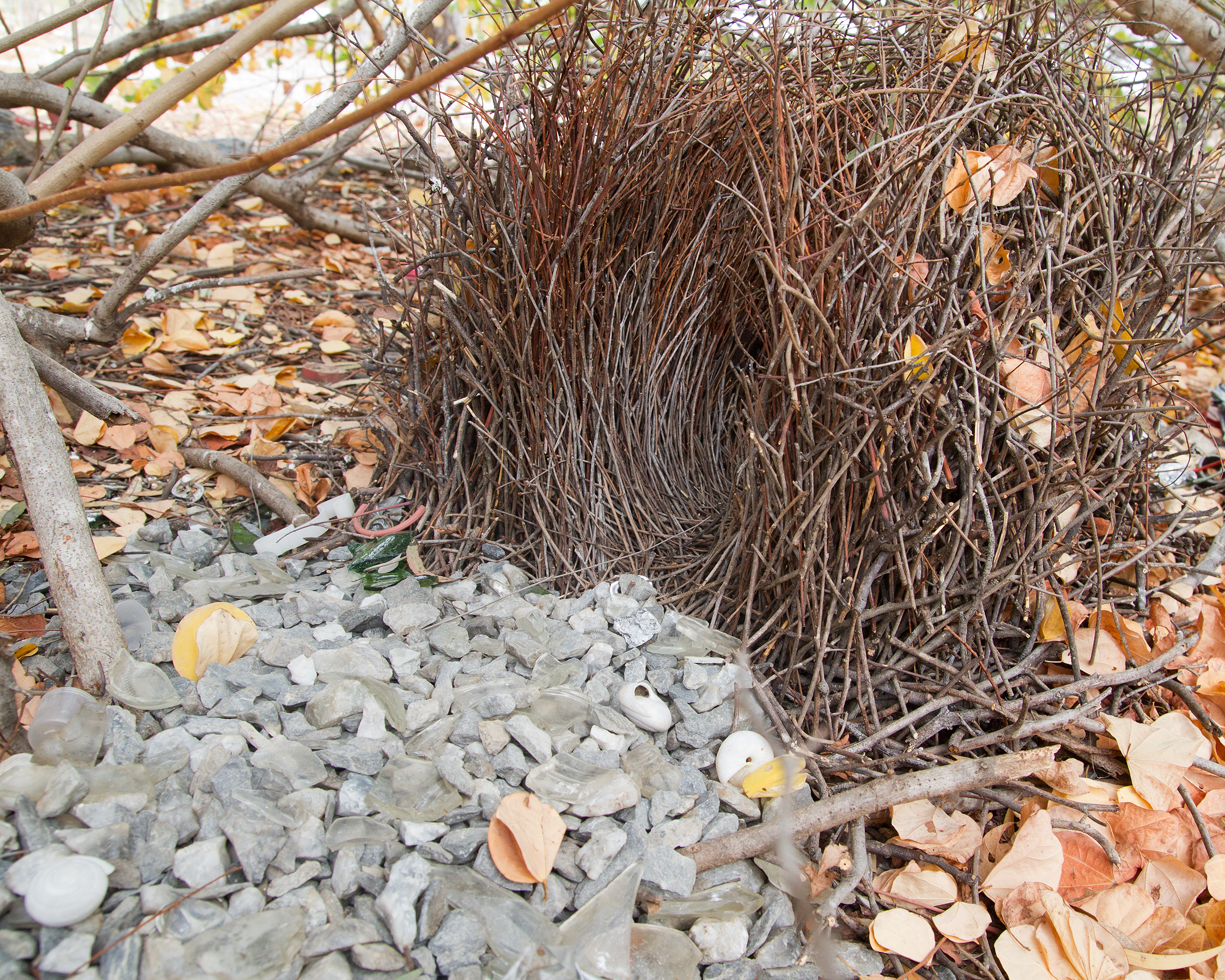We're open daily! View holiday hours
Science News
Bowerbirds' Optical Illusions
January 23, 2012

Ah, the trouble lovelorn males will go to to get some lovin’.
To attract mates, male bowerbirds play many roles—artist, decorator, architect, and a bit of an M.C. Escher. Australian researchers have found that not only will these birds build a castle and courtyard for their ladies, but they also employ forced perspective when doing so—a little trickery up their sleeves, um, wings.
Twenty species of bowerbirds live in Australia and Papua New Guinea. The males build a bower to attract females and decorate the area around the bower with brightly colored objects, shells, leaves, sticks, flowers, and so forth.
One species, the great bowerbirds, builds a bower avenue that leads to a courtyard that displays these objects. In 2010, Deakin University scientists found that when arranging the objects, the male birds create an optical illusion called forced perspective. The larger objects are moved to the back of the courtyard, farther away from the bower; smaller objects are placed closer to the entrance of the bower. The researchers believe that from inside the bower, a female bowerbird, viewing the objects, will think them all the same size.
“This gives the illusion that the court is smaller than it is and anything displayed within the court is larger than it really is,” Deakin’s John Endler explains. “We know that this doesn’t happen by chance. When we improved or reversed the size order of the objects in the courts, the males put them back within three days. Bower geometry is obviously very important to them.”
A new study by the same Deakin team explains why this geometry is so important. The better the forced perspective works, the more lovin’ the male bowerbird will get, says Endler. “The best predictor of mating success… is when we consider how the gradient looks from the female’s point of view: males that construct courts that look evenly patterned to the female within the bower attract the most mates.” You can check out one such lucky male in this video.
The recent study was published in last week’s Science; the 2010 paper appeared in Current Biology.
Want to learn more about crazy animal mating habits? Come visit the Academy’s upcoming Animal Attraction exhibit, opening February 11.
Image: JJ Harrison